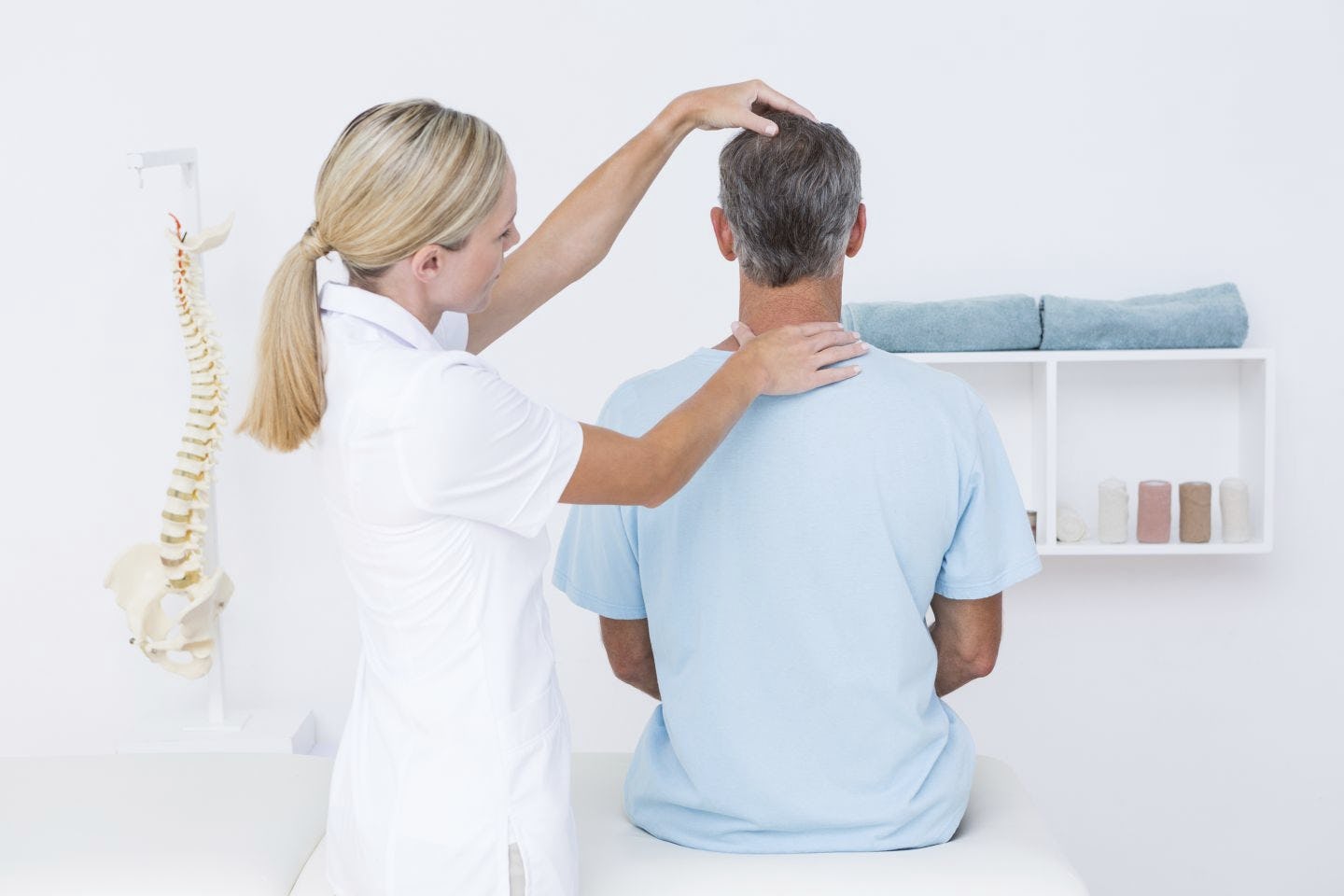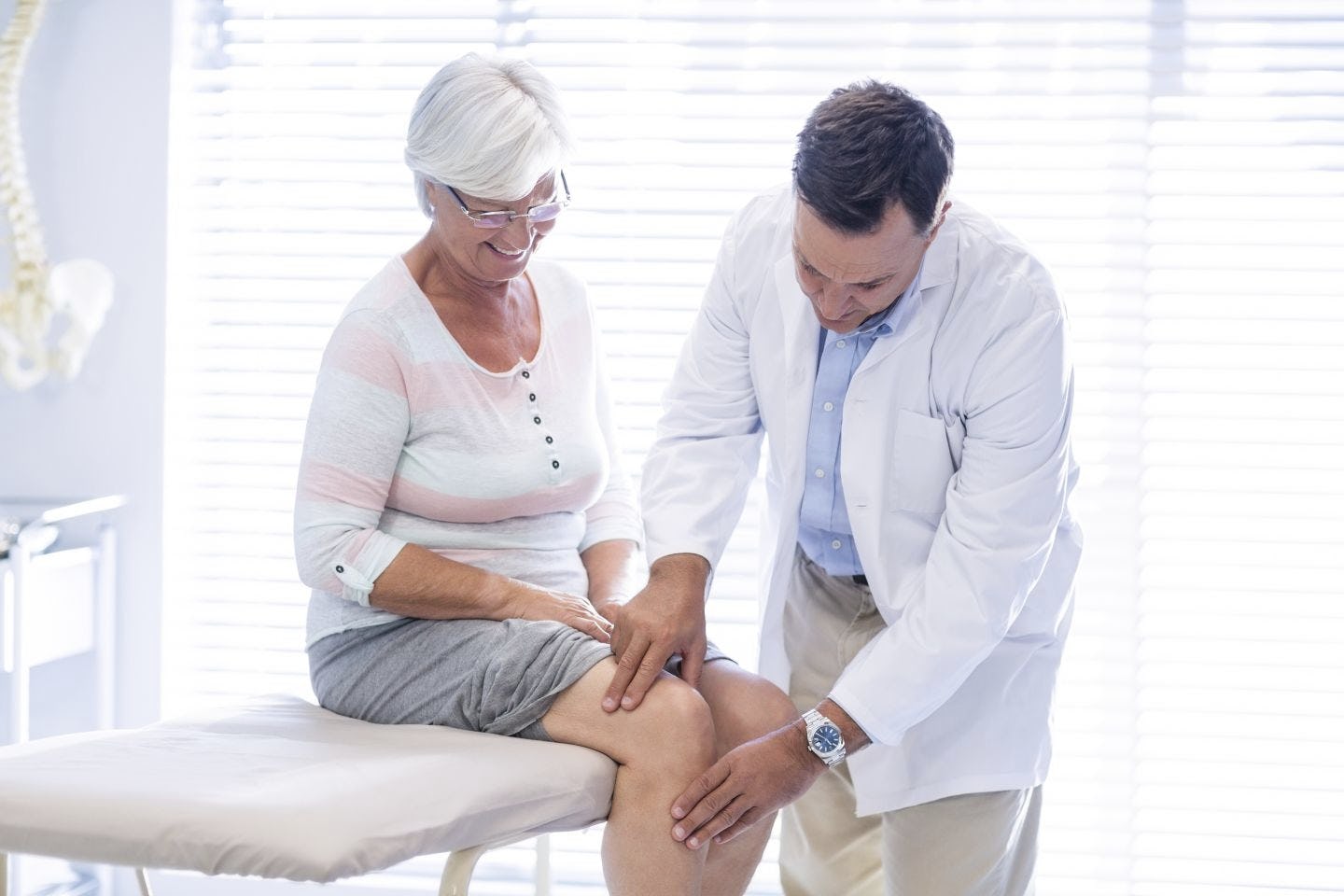Click on the Body Part to Learn More
-
Physical therapists (PTs) are experts in the art and science of the evaluation and treatment of human movement dysfunctions. We care for people of all ages and treat a variety of muscle, joint and neurological conditions.
Conditions we have successfully treated:
- Whiplash
- Acute Pain
- Sprains/Strains
- Chronic neck pain*
- Arthritis (spondylosis)
- Post Surgical Fusion
- Degenerative Disc Disease
- Pinched Nerves (Radiculopathy)
What are my treatment options?
- Drugs
- Surgery
- Epidural Injections
- Physical Therapy*
Advantages of Physical Therapy:
- No side effects.
- Cost-effective.
- Supported by clinical research*.
- Customized to treat the underlying cause.
Your Recovery Process:
- Pain relief is priority number one.
- Recovery of any lost neck motion.
- Neck stabilization techniques
- Recovery of functional movement.
- Independent care.
Components of Your Care:
- A thorough biomechanical evaluation.
- Extensive patient education.
- A customized treatment plan.
- Gentle hands-on techniques to relax the muscles.
- Effective joint mobilization techniques to decrease stiffness.
- Pain relieving modalities such as ice, heat, ultrasound or electrical stimulation.
- Dynamic or static neck traction.
- Targeted stretching for tight muscles.
- Individualized posture retraining.
- Core neck stabilization techniques.
Everyone is different. You may require one or two visits, or an extended care plan over several weeks or months. If you’re ready for relief, and tired of “masking” your pain, treat the cause, not just the symptoms!
* Cited from the academic journal, Cochrane Database of Systematic Reviews 2004.
-
A Reputation for Results
If you have low back pain, Cadence Physical Therapy strongly encourages you to seek the care of our qualified therapists. Physical therapy helps patients avoid prolonged episodes of pain that can result in long-term disability. For those experiencing chronic pain, it should be part of a multi-faceted rehabilitation program. The fact is, physical therapy is conservative, cost-effective, reversible, and rarely has any side effects.
We Address the Cause
Millions of people suffer from low back pain that may result in a variety of problems such as limited recreational activities, troubles with daily activities, and even complete immobility. Early intervention is critical to help reduce pain and recover function. A combination of patient education, manual techniques, and therapeutic exercise is proven to reduce pain and help a patient recover their independence.
Conservative, Cost-Effective, No Side Effects
Drugs offer short-term relief but may have severe side effects. Spinal adjustments may be helpful, but this type of intervention is usually recommended for months-on-end with little proof of its effectiveness. In contrast, a comprehensive physical therapy program will not only provide you with pain relief, but will help you avoid repeat and often progressively worse episodes of pain. Once the pain subsides, we empower patients with the tools they need to help avoid repeat problems.
Conditions we commonly treat:
- Lumbar Sprain/Strain
- Acute Low Back Pain
- Sciatica
- Lumbago
- Pinched Nerve
- SI Dysfunction
- Slipped/Herniated Disc
- Arthritis
- Spondylosis
- Spondylolysis
- Spondylolisthesis
- Facet Arthropathy
- Degenerative Disc Disease
-
Physical therapists (PTs) are experts in the art and science of the evaluation and treatment of human movement dysfunctions. We care for people of all ages and treat a variety of muscle, joint and neurological conditions.
Conditions we have successfully treated:
- Impingement*
- Rotator Cuff Tear
- Instability
- Fracture/Trauma
- Frozen Shoulder
- Tendinopathy
- Arthritis
What are my treatment options?
- Drugs
- Surgery
- Physical Therapy*
Advantages of Physical Therapy:
- No side effects.
- Cost-effective.
- Supported by clinical research*.
- Customized to treat the underlying cause.
Your Recovery Process:
- Pain Relief
- Restoration of Normal Movement
- Recovery of Function
- Independent Care.
Components of Your Care:
- A thorough biomechanical evaluation.
- Customized treatment plan.
- Extensive patient education.
- Hands-on techniques to relax the muscles and recover mobility.
- Stretching for tight muscles.
- Strengthening of weak muscles.
- Mobilization of stiff joints.
- Modalities such as ice, heat, ultrasound or electrical stimulation.
Everyone is different. You may require one or two visits, or an extended care plan over several weeks or months. If you’re ready for relief, and tired of “masking” your pain, treat the cause, not just the symptoms!
* Physical therapy has been proven to be as effective as surgery. Ann Rheum Dis. 2005 May:64(5).
-
Physical therapists (PTs) are experts in the art and science of the evaluation and treatment of human movement dysfunctions. We care for people of all ages and treat a variety of muscle, joint and neurological conditions.
Conditions we have successfully treated:
- Arthritis
- Chondromalacia
- Patellofemoral Pain
- Ligament Sprains
- Tendonitis/Bursitis
- Tendon/Muscle Strains
- IT Band Syndrome
- Post Surgical Conditions
What are my treatment options?
- Drugs
- Corticosteroid Injections
- Epidural Injections
- Physical Therapy*
Advantages of Physical Therapy:
- No side effects.
- Cost-effective.
- Supported by clinical research*.
- Customized to treat the underlying cause.
Your Recovery Process:
- Pain Relief
- Recovery of Knee Motion
- Recovery of Strength
- Functional/Sports Retraining
- Independent Home/Health Club Program
Components of Your Care:
- A thorough biomechanical evaluation.
- Extensive patient education.
- A customized treatment plan.
- Gentle hands-on techniques to relax the muscles.
- Effective joint mobilization techniques to decrease stiffness.
- Pain relieving modalities such as ice, heat, ultrasound or electrical stimulation.
- Targeted stretching for tight muscles.
- Progressive strength training.
- Balance and muscular re-education.
Everyone is different. You may require one or two visits, or an extended care plan over several weeks or months. If you’re ready for relief, and tired of “masking” your pain, treat the cause, not just the symptoms!
* Cited from the academic journal, Clinical Biomechanics, Aug. 2006.



